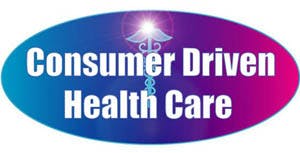As companies continue to seek ways to manage health care costs, many are encouraging employees to enroll in consumer-driven health plans. And many are considering full-replacement CDHP. There are some important considerations before deciding to go toward full-replacement CDHP and best practices for successful implementations.
According to a 2011 Towers Watson/National Business Group on Health study, 8 percent of employers now offer full-replacement consumer-driven health plans to at least a portion of their workforce. It’s anticipated that this rate could reach nearly 13 percent by 2012 if companies follow through with their current health plan strategy.
Before making the move to full-replacement CDHP, there are a number of factors you need to consider.
You need to look at the needs of low-income employees, especially those with families, and ensure they are protected from high out-of-pocket costs with a generous employer contribution to the health savings or health reimbursement account. You also need to weigh the challenge of doing a full replacement against the opportunity to drive high voluntary participation in CDHPs through well-crafted plan design, costs and communication.
If you do move to full-replacement CDHP, follow our advice and best practices to ensure success by focusing on the needs of employees and their families at every step:
- Connect change to the big picture. Think about your over-arching benefits strategy. Is there a wellness component, for example, that you can tie in to your full-replacement CDHP communications? Is CDHP part of your evolving benefits package? Be sure to clearly explain how this change is connected to your overall strategy. Likewise, help employees and their families see the big picture for themselves. Teach them how health decisions are connected to retirement decisions and the benefits of saving for future health expenses through tax-advantaged health savings accounts.
- If you offer choice, make it meaningful. Offering multiple consumer-directed health plans can still allow for some employee choice. But, the average person is easily overwhelmed by health care decisions and will not be able to decipher the complexities of high-deductible plans and various account options. If you offer more than one plan, make sure the options are differentiated enough to help employees make clear and confident decisions about which plan is best for their personal situation.
- Involve all key stakeholders and proactively address the press. Stop the rumor mill before it starts and prevent news of your company’s move to full-replacement CDHP from hitting the press before you’ve announced it. Get your media relations people to send out press releases with the full what and why of the company’s move to full-replacement CDHP. Make sure union heads, managers, and other important stakeholders are kept up to date so that they can answer questions and calm any fears.
- Test your plan with focus groups. Listen to your employees. Ask them what they need to use the plan well. Use their feedback to adjust your communication strategy and get testimonials that can be incorporated into communications.
- Use the right mix of media to reach diverse audiences. You’ll need to reach all generations of your workforce using a combination of print media and new media. A benefits website is just the beginning. Twitter and blogs are a great way to have a conversation with your team at a minimal cost. The vast majority of health care decision-makers are women. Find ways to get the information to them, such as a robust benefits website and strategic, targeted print materials.
- Communicate early, often; remember to listen and respond. Employee reactions will vary. Some employees may be upset with only a CDHP option or afraid of the impact. Others may already be enrolled in a CDHP and wonder what the big deal is. Your communication should anticipate these reactions and give employees enough time and information to be on board with the changes. You’ll need to communicate at least 3 to 4 months before annual enrollment to do this right. Be sure to include user guides and tip sheets that explain how CDHPs work. Anticipate your employees’ need to vent; expect your call center to light up. Listen and respond.
- Help people relate. Similar to testimonials, “people like me” scenarios help you effectively reach all the demographic groups in your workforce. For example, a young, single person will use the plan differently than a parent.
- Communicate year-round! No matter what media you are using, you must keep the conversation going all year. Social media tools like Twitter and blogs are a cost-effective way to publish fresh streams of news and information about your benefits. Healthy living happens all year, not just during annual enrollment.
